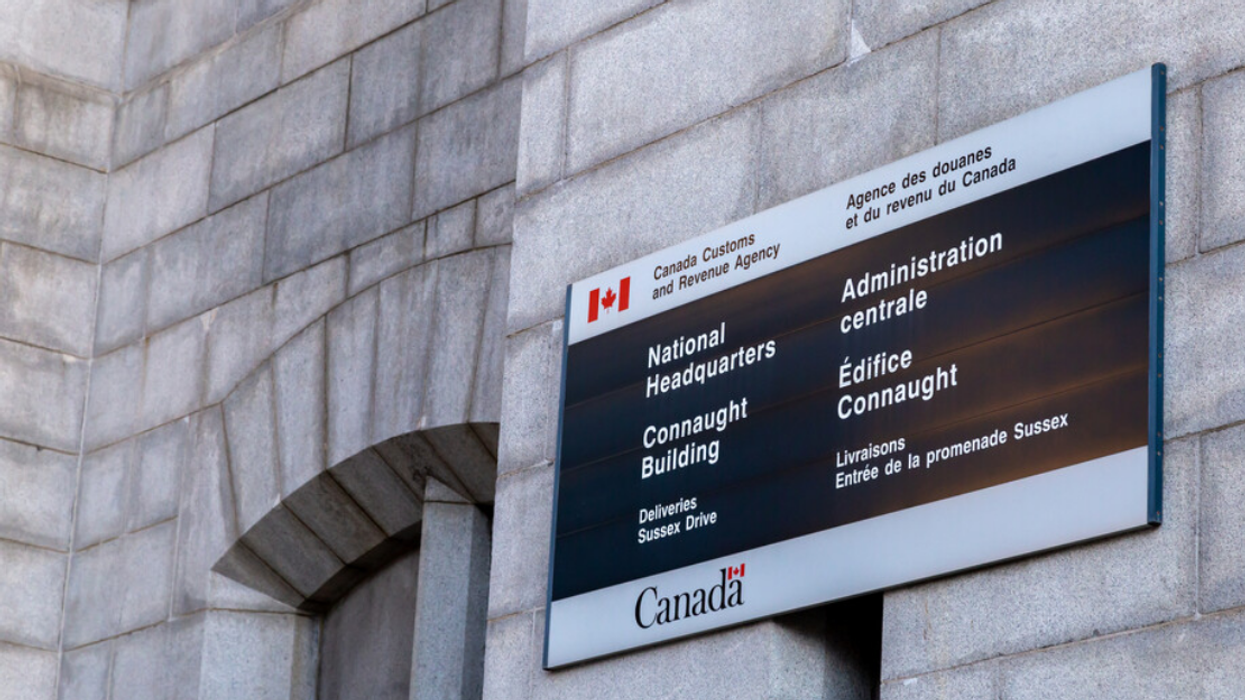Canada's Child Benefit Is Going Up & You Could Get Almost $7,500
Here's how eligibility and applications work — and when you'll see the money.

The CRA's headquarters in Ottawa.
Parenthood is many things, but cheap it is not. No one knows this better than families with low incomes, so the Canadian government has decided to step in and give tax-free payments to support families according to their needs. This year, like the last three years, the amount of money being provided to eligible families has increased, this time by just under $450 compared to 2022.
Here's a breakdown of how the Canada Child Benefit (CCB) works, who's eligible and how much you can expect to receive if you qualify.
What is the Canada Child Benefit, and who's eligible?
The CCB is a monthly tax-free payment intended to help eligible families support their children under the age of 18. To be eligible for the payments, you must live with a child under the age of 18 and be primarily responsible for their care and upbringing. You'll also need to be a resident of Canada for tax purposes, and either you or your partner need to have resident status in Canada, whether that's by virtue of being a citizen or being a protected person.
Those with foster children are eligible for other payments, but not the CCB.
How do you apply for the Canada Child Benefit?
First, you'll need to determine which caregiver should submit the application. In partnerships with one female parent, "the female parent is presumed to be primarily responsible for the care and upbringing of all the children in the home," according to the Canadian government. Yes, they actually said that.
If the other parent is primarily responsible for raising and caring for the kids, the government says, "they should apply and attach a signed letter from the female parent stating that they are primarily responsible for the care and upbringing of all the children in the home."
You may be asking yourself, "What about gay couples?" Well, in that case, the government simply says only one parent need apply.
If you think you might have shared custody of a child or children, visit the government's website to determine how to proceed. TL;DR, if the kids spend less than 40% of their time with you, you aren't eligible for the CCB at this time.
How much will parents receive in 2023?
There's a handy calculator on the government website to help you estimate how much you'll get, but the short answer is that families with an adjusted family net income (AFNI) under $34,863 will receive the highest possible payout from the government, which is $7,437 per year for each child under 6 years old and $6,275 yearly for children over the age of 6 (and under 18, of course).
This amounts to $619.75 per month and $522.91 per month respectively. It's just over a 6% increase over last year's highest possible payment, marking the third year in a row that CCB payments have been bumped up.
There are additional supplements for children with disabilities. It's also worth noting that, in Quebec, "you must file your application for child assistance payments and make any changes to your family situation directly with the Retraite Québec," according to the government.
When can Canadians expect to receive their Canada Child Benefit payments?
The remaining dates for 2023 payments are as follows:
Note that you won't receive monthly payments if your total CCB amount is under $240. After submitting your application, you'll receive your first payment within eight weeks if applying online or 11 weeks if applying by mail.
This article's cover image was used for illustrative purposes only.
- The Canada Dental Benefit Is Now Active — Here's What You Need To Know ›
- 3 Of Canada's Biggest Benefits Have Payment Dates In January — Here's How Much $ You Could Get ›
- The Canada Child Benefit Is Going Up & Could Now Give $7K/Year To Eligible Families ›
- 11 Government Of Canada Jobs Available Right Now That All Pay Over $100,000 - MTL Blog ›

